By now, Facebook ads aren’t exactly a new thing.
We all know the drill: It’s all about promoting your “unicorns” – the top 1-3% of your best content and/or offers, the ones with unusually high engagement rates, e.g. click-through rates of 10% or higher. Why?
Facebook sponsored posts with high engagement rates get assigned high Relevance Scores, which get rewarded by the Facebook Ad algorithm through increased exposure at lower cost.
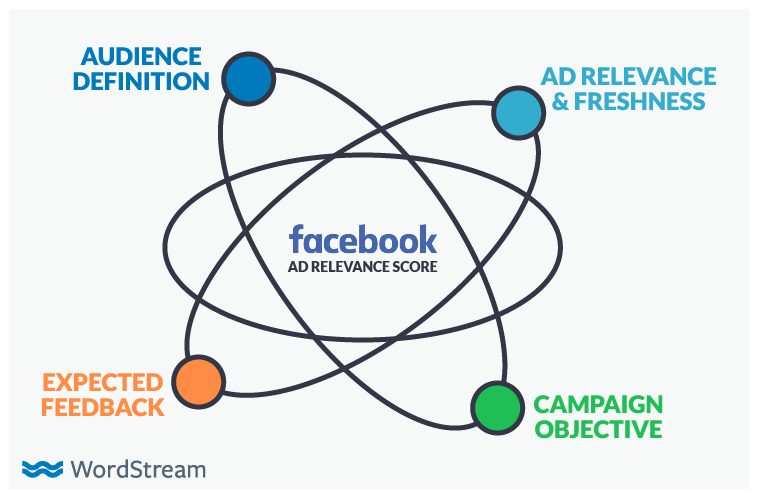
The cost per click for a sponsored post with 1% engagement rate might be around $3-5 per click, but if you can raise the engagement rate to 10%, your CPC will fall to around 25 cents.
But HOW do you make the content you’re trying to promote get 10%+ click-through rates?
How Your Facebook Ad Targeting Strategy Affects Relevance Score
The normal way to increase relevance and CTR is to be a bit picky with your Facebook ad targeting – no matter how boring your sponsored content is, if you get it in front of a targeted enough audience, it can become exciting to a smaller number of people, or at least that’s how the theory goes:
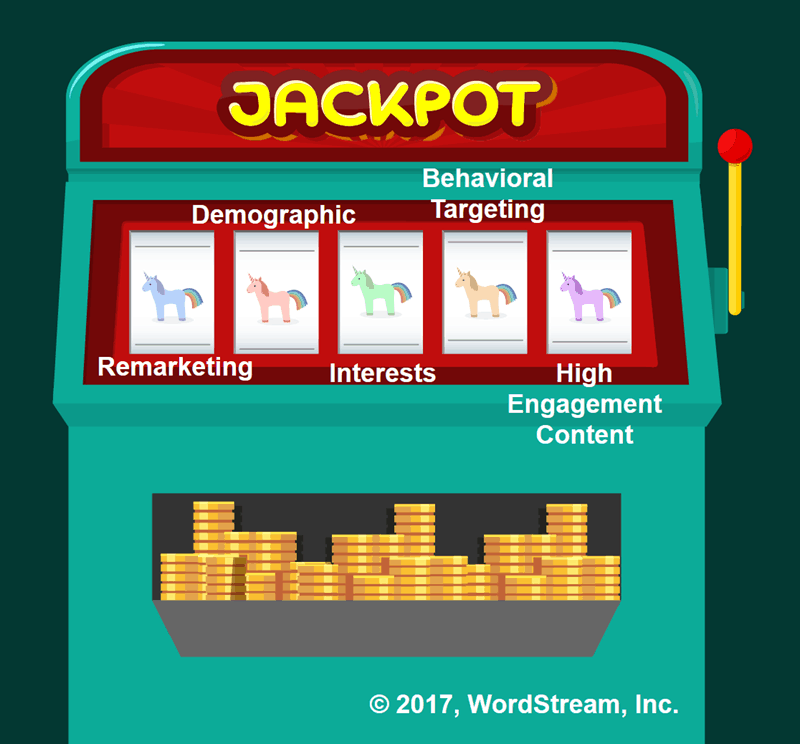
For example, if you’re selling PPC marketing software, you promote your offers to people who have:
- An interest in marketing
- Middle-management job titles
- Recently visited your site
- Etc.
Here we’re casting a narrower net, and maximizing the engagement rates within it.
The problem is that you can lead a horse to water but you can’t make it drink. Meaning, just because you’ve created a perfectly targeted ad set, doesn’t guarantee the prospective buyer will find your offer worthy of clicking on.
Further, sometimes you can over-define your audience, meaning you’re only showing your ad to a tiny pool of people.

A Bold New Way of Ad Targeting: The Inverted Unicorn Method
My new Facebook ad targeting strategy has the potential to dramatically increase your sponsored post engagement rates and your relevance scores, which in turn will simultaneously increase reach and lower cost per engagement.
Basically, the idea here is rather than only targeting correlated interests (e.g. marketers with middle-management job titles), we’re going to target two completely different interests: for example, liberals who watch Star Trek Deep Space Nine.
These are two big audiences, but we’re only targeting the overlap:
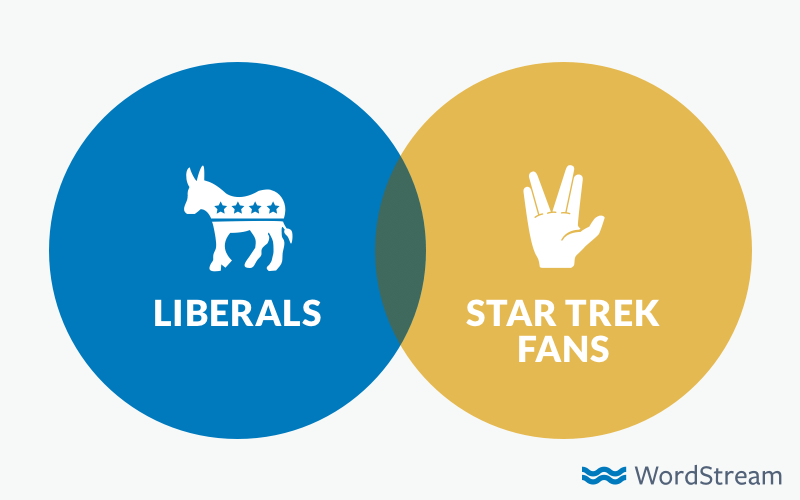
A Crazy Example of the Inverted Unicorn Method for Facebook Ad Targeting
Two weeks ago I created a case study that highlighted how Fake News being spread via Facebook Ads can pose a danger to society.
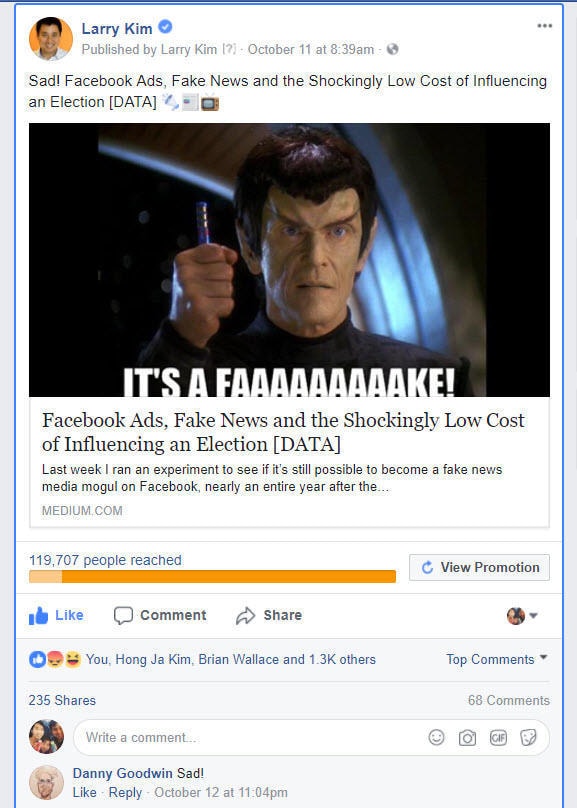
I only had a $400 budget to promote the story using Facebook Ads. Yet the content promotion efforts yielded:
- Gazillions of views
- Over 1300 likes
- 235 shares
- 68 comments
The story got picked up in Business Insider, Forbes, and a major international television network is filming a story on this next week at my office.
And it’s even possible that Trump might have heard about the story!
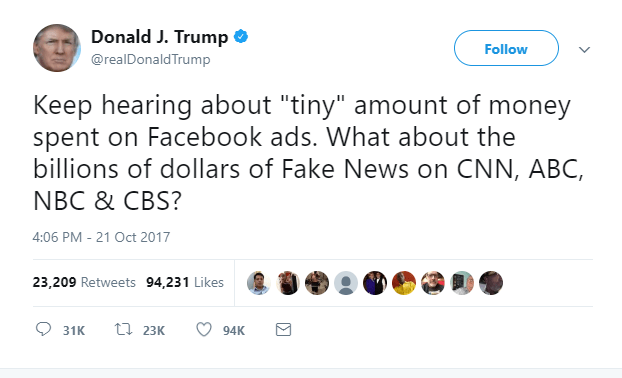
Last week, Facebook started taking out ads on the issue.
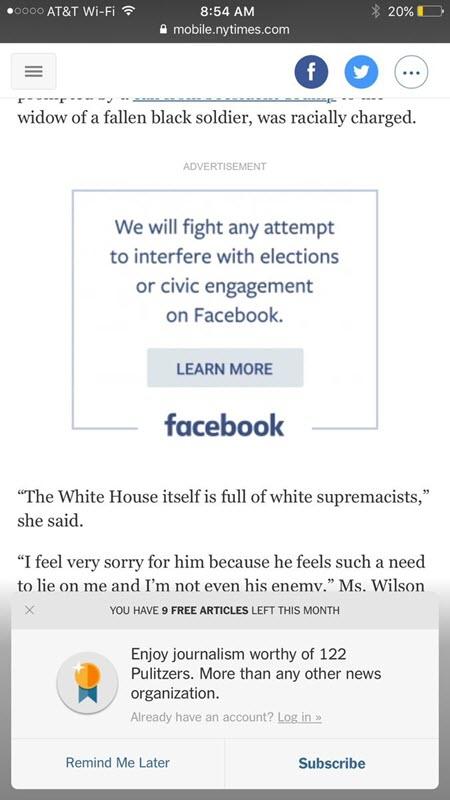
And they even updated their ad reviewing policy:

And about a hundred people at Facebook checked out my LinkedIn profile last week.
Did my story cause all this? Impossible to know! But I can share the Inverted Unicorn Facebook Ad targeting strategy that I employed.
As a reminder, I only had $400 to spend on content promotion, so I picked a demographic that I thought would find this story to be particularly interesting: Liberals.

Unfortunately, this audience is just too big (26 million people!). That’s just too broad considering I only have $400 to spend.
I had to find a subset of this huge audience that I could still meaningfully target.
So here’s what I did. I (basically arbitrarily) picked another large audience, then targeted the overlapping segment of these two large audiences. I was able to cut down the audience size to 1.1 million people by requiring that people in my target audience be bothLiberal and Star Trek Fans, like this:
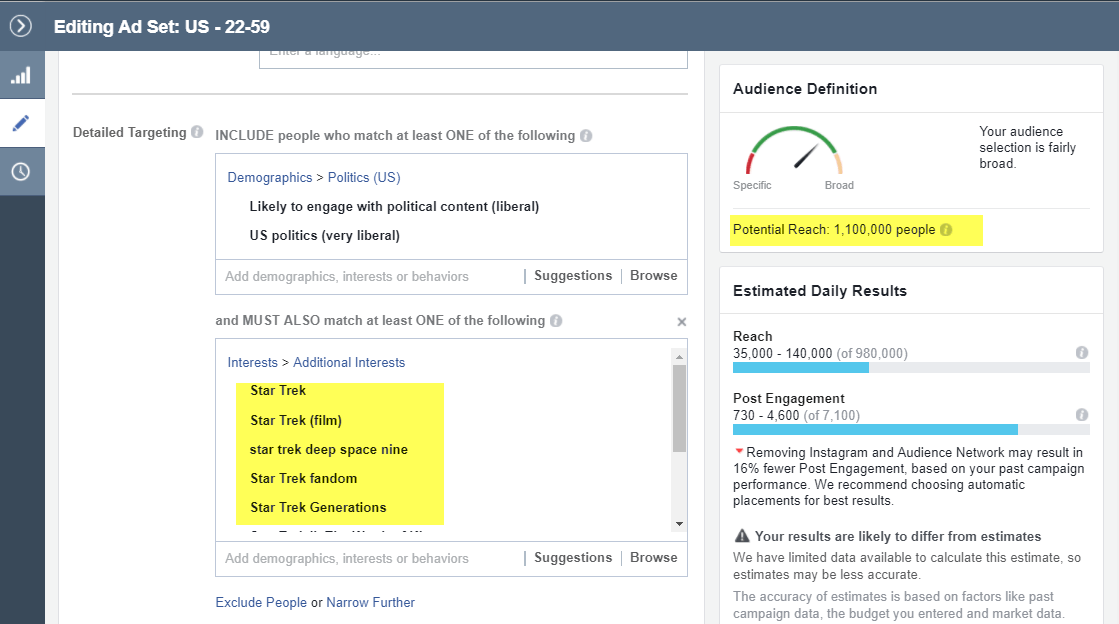
What does Star Trek Deep Space Nine have do with Liberals? Absolutely nothing!
But it allowed me to target people who would might understand this obscure joke.
Then, I used that joke in the title image for the post:
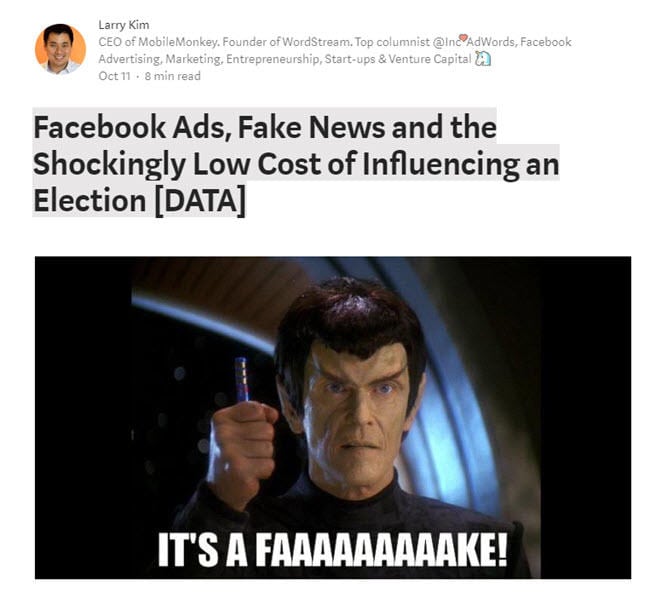
If you have no clue what this joke is all about, that is the beauty of this strategy. You would have never seen the ad in the first place! It was engineered to appeal specifically to this audience.
It worked: The Star-Trek loving liberals engaged with the post, leading to strong engagement metrics and a Facebook Relevance Score of 7/10…

…and overall very high engagement rates for such a small budget.
I know it worked because I got all these kooky Star Trek comments in the Post Comments:
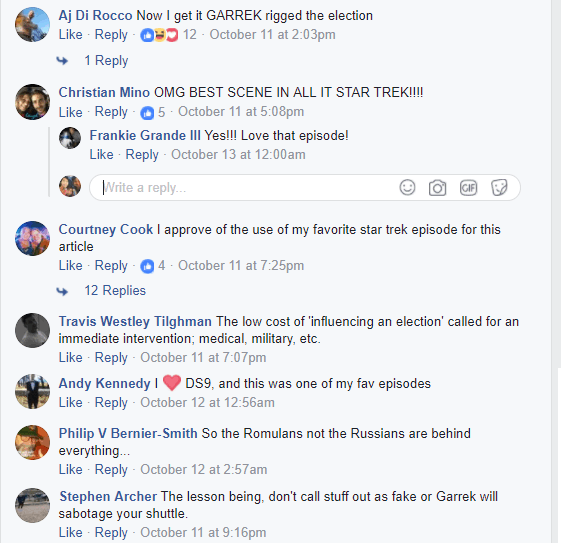
In a nutshell, the Inverted Unicorn Facebook Ad Targeting Strategy makes ads more interesting by appealing to two or more of a user’s different interests.
There are so many ways you could use this strategy. For example, what if you’re HubSpot and you want to promote your INBOUND conference on a small budget? You could target the intersection of small business owners and fans of Michelle Obama. Then you would feature an inspiring image of her in your ad, noting that she’s a keynote speaker. Much more effective than a boring stock image of a laptop or something.
Closing Thoughts
Are your CTRs on Facebook too low?
Are your Relevance Scores below 5/10?
Are you stuck promoting the same boring ads which never get more than relevancy score 2/10?
Are the audiences you’re targeting way too big in comparison to your budget?
If you answered yes to any of the above, perhaps it’s time you employed the Inverted Unicorn Facebook ad targeting method for doubling click-through rates!
Originally published in: Wordstream.com
